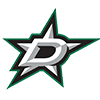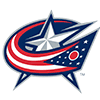You only have one chance to make a first impression. We all know the saying. It's usually advice to those going on a job interview, on a first date or perhaps meeting the parents of your significant other. Wow, it's been eons since I've done any of those.
While it's not the same thing, fantasy gamers need to overcome the bias of a first impression, because it is truly that, a bias. The human brain is wired to better remember the earliest exposure a player. It's something we need to consciously avoid.
If a pitcher has a few rough outings in June or July, they're generally brushed off as "one of those things". But if a pitcher opens the season with a few clunkers, he stinks and is dead to us.
What follows are eight pitchers with an ERA over 5.40 in April, but with a combined mark under 4.00 from May through July. The first couple names are well known, so there may not be any significant bias to overcome, but they serve as a reminder to keep early performances in perspective.
Blake Snell
After his first five starts, Snell's ERA was an unsightly 5.48 with a 1.87 WHIP. Optimists pointed to 26 punchouts in 23 innings, but others were appalled by 18 free passes and five long balls.
Since that terrible stretch, Snell has posted a 1.91 ERA and 1.12 WHIP. Sure, he's been aided by a .271 BABIP and 89.2 percent left on base mark, but his
You only have one chance to make a first impression. We all know the saying. It's usually advice to those going on a job interview, on a first date or perhaps meeting the parents of your significant other. Wow, it's been eons since I've done any of those.
While it's not the same thing, fantasy gamers need to overcome the bias of a first impression, because it is truly that, a bias. The human brain is wired to better remember the earliest exposure a player. It's something we need to consciously avoid.
If a pitcher has a few rough outings in June or July, they're generally brushed off as "one of those things". But if a pitcher opens the season with a few clunkers, he stinks and is dead to us.
What follows are eight pitchers with an ERA over 5.40 in April, but with a combined mark under 4.00 from May through July. The first couple names are well known, so there may not be any significant bias to overcome, but they serve as a reminder to keep early performances in perspective.
Blake Snell
After his first five starts, Snell's ERA was an unsightly 5.48 with a 1.87 WHIP. Optimists pointed to 26 punchouts in 23 innings, but others were appalled by 18 free passes and five long balls.
Since that terrible stretch, Snell has posted a 1.91 ERA and 1.12 WHIP. Sure, he's been aided by a .271 BABIP and 89.2 percent left on base mark, but his 3.07 xFIP indicates his turnaround is not all good luck. Specifically, his 34.0 percent strikeout rate is second to only Spencer Strider's 38.8 percent mark since May 1.
Snell altered his repertoire, throwing fewer four-seam fastballs while increasing the usage of his curve and changeup. Though it's unclear if there is a direct cause and effect, the swinging strike rate on Snell's curve has improved since the first month of the season.
Snell's 11.9 percent walk rate is still poor and could come into play if he can't maintain his elevated strikeout rate. However, he checks in as a great target for those wanting to improve their pitching. Point out the high walk rate contributes to a high WHIP, and a season-long 3.48 xFIP and 3.50 FIP suggests an ERA correction is on the way.
Joe Musgrove
Musgrove's season debut was delayed a couple of weeks after he broke his toe in the weight room. Those accepting the injury discount at the draft table initially rued their decision, as the Padres righty was sitting on a 6.75 ERA and 1.58 ERA after three starts. A 4.30 xFIP over those 15.2 innings portended better days ahead, but no one could foresee what was to come.
In his next 11 outings, Musgrove recorded a 2.17 ERA and 0.99 WHIP with a solid 25.5 percent strikeout rate and frugal 3.8 percent walk rate. To be fair, Musgrove's 3.33 xFIP points towards an ERA correction, but even that mark would benefit any fantasy staff.
Like Snell, Musgrove threw more curveballs after the bumpy start. Perhaps the Padres brass noticed something with each to initiate the change. However, unlike Snell, Musgrove's curveball swinging strike rate has not changed, but the performance of his four-seamer has increased.
In practical terms, the ship has sailed to acquire Musgrove in redraft formats, though all bets are off in keeper leagues.
Kyle Bradish
With the upper-level arms out of the way, it's time to have some fun. Truth be told, Bradish was the impetus for this piece. I recently wrote him up as a streamer in the ESPN Daily Notes and was blown away by how well he's pitched lately.
Sure, it's hard to ignore a 3.05 ERA and 1.13 WHIP, but why is he rostered in only 37.3 percent of ESPN leagues? The question is meant to be rhetorical, as he's rostered in 100 percent of the NFBC Main Event and RotoWire Online Championship leagues. However, for those curious, most ESPN leagues are composed of 10 teams, with each team having seven active roster spots for pitching. Most team managers have four or five starting pitchers they bounce between active and reserve. The rest of the starts are of the streaming variety. This means only the top 40 to 50 starting pitchers are routinely unavailable. That said, Bradish checks at No. 35 among starting pitchers on the ESPN Player Rater and No. 33 on the RotoWire Earned Auction Value page.
Bradish doesn't have much prospect pedigree, and his age-25 season last year was uninspiring. When he began the 2023 campaign with a 6.14 ERA and 1.84 WHIP, he was written off by most fantasy enthusiasts.
Oops. Over the next 13 efforts, Bradish has recorded a 2.47 ERA and 0.99 WHIP with an above-average 24.3 percent strikeout rate. A .264 BABIP and 81.0 percent left on base mark over these 76.2 innings have certainly helped, but his 3.67 xFIP in this span demonstrates hope that the Regression Monster will be somewhat gentle.
Bradish is also throwing fewer fastballs, but following a big spike in his slider usage, both his two- and four-seam fastballs have been more effective, as both were getting crushed early. There isn't a matchup to fear with Bradish on the hill, home or away.
Michael Lorenzen
In three April starts, Lorenzen posted a 7.07 ERA and 1.64 WHIP. He fanned 15 in those 14 stanzas, but he walked five and allowed 18 hits, three of which left the yard. For a more established pitcher, the reasonable strikeout to walk ratio would have bred confidence in a turnaround, but with a 536 ADP in the NFBC Main Event, he was viewed as an occasional reserve flyer.
When the calendar turned to May, something clicked for Lorenzen. His ERA has been 2.91 with a 1.00 WHIP after April. However, an 18.3 percent strikeout rate over these 86.2 innings says to calm down. A .243 BABIP and 75.5 percent left on base are evidence of some good fortune. His 4.18 xFIP in this stretch is still better than league average and can be a fantasy asset, but the low strikeout rate and pitching for a sub-.500 club don't elicit much fantasy appeal.
Under the hood, Lorenzen is throwing more four-seam fastball and sliders, but fewer sinkers. The main improvement he's experienced since May is a big spike in the swinging strike rate on his changeup. He's throwing it about 0.4 mph slower over the last few months, which may not seem like much, but it could be just enough to mess with the timing of opposing hitters.
Considering he was almost completely off the radar in draft season, the fact he's a viable streamer is a significant improvement. He's predictably rostered in every Main Event leagues, but Lorenzen is still available in 26 percent of the 12-team RotoWire Online Championship leagues. The time to pick him up would have been last week as he stifled the Kansas City Royals with seven shutout stanzas on Thursday night, though he only tallied three strikeouts. A deadline trade to a contending club could also help boost his win potential.
Michael Kopech
Kopech's Main Event ADP was 268, or around the 80th starting pitcher of the board. This makes him an SP6, or someone deployed for favorable matchups. After posting a 7.01 ERA and 1.71 WHIP in five April starts, no matchup seemed favorable. Kopech fanned 27 in those 25.2 innings, but he walked 16 while surrendering eight homers.
Since then, Kopech has recorded a 3.24 ERA and 1.26 WHIP, but he's done it despite a 5.5 BB/9 and 1.5 HR/9. His xFIP through April was 4.84; it's been 4.49 since. That's better, but, I mean, really?
His 14.4 percent walk rate since May 1 is a tick higher than his initial 13.4 percent level. His 26.4 percent strikeout rate is up appreciably from the 22.7 percent mark he posted through those first five starts, but its improvement is masked by the terrible control.
Kopech's perceived improvement is being fueled by a .213 BABIP and 88.6 percent left on base rate. Chasing his strikeouts is a slippery slope. There's a better chance Lady Luck exerts her charms elsewhere than Kopech suddenly moves to the corner of Control St. and Command Ave.
Clarke Schmidt
Schmidt's ADP was about half a round after Kopech, so he too was ticketed to be a back-end matchup play. After six April outings, Schmidt's 6.84 ERA and 1.68 WHIP was no longer streaming material. However, under the hood, a solid 26.9 percent strikeout rate and reasonable 5.9 percent walk rate signaled to hold Schmidt, not drop him. After all, how long could a .394 BABIP and 64.3 percent left on base mark last?
Sure enough, Schmidt's post-April ERA is a tidy 3.50 with a 1.21 WHIP. Curiously, he's been fanning only 20.8 percent of hitters from May on, with a slight uptick in walks to 6.7 percent. A .285 BABIP and 74.9 percent left on base level have driven the ratios down.
As far as Schmidt's pitch mix goes, he's throwing more cutters, and even though they're generating fewer swinging strikes, Schmidt is getting weaker contact.
Though it's masked by his horrendous start to the campaign, Schmidt is currently performing as expected, that is commensurate with an SP6 or so, deployable under favorable conditions. It's a good sign that his walks are lower than last season, though those hoping for more strikeouts will have to settle for a level just above league average.
Brayan Bello
At the start of the season, there was a list of things Bello needed to do to take the next step. Developing his secondaries to complement a plus fastball and changeup was key. So was learning to be more composed, and not letting adversity get to him.
Bello was also dealing with injuries, but when he finally debuted in mid-April, his 9.82 ERA and 2.18 WHIP after two starts put his MLB roster spot in jeopardy. Fortunately for him, the combination of injuries to other Boston starting pitchers and some trust from manager Alex Cora kept him in the rotation.
Fourteen starts later, Bello is one of the main reasons the Red Sox are still with striking distance of a playoff berth. Over that stretch, he's registered a 3.05 ERA and 1.14 WHIP. The associated 3.58 xFIP is about half a run higher than his actual ERA, but an ERA in that range would still be well below league average.
The low ERA is fueled by a .263 BABIP and 82.1 percent left on base mark, so assuming Bello maintains his current skill level, he's in line for a ratio correction, though as suggested, it shouldn't be severe.
Bello's pitch distribution hasn't changed much from last season, though he is mixing things up more. An impressive 25.4 percent swinging strike mark on his changeup is a couple ticks better than last season, but overall, he's sporting a below average 20.5 percent strikeout rate. As well as he's pitched, the lack of dominance renders Bello susceptible to outings like he experienced against Oakland last time out, when he yielded six runs on four frames while giving up three homers.
Despite the stellar sophomore campaign to date, Bello still has work to do before he's a reliable fantasy force. He hasn't displayed it yet, but the eye test suggests he can further refine his arsenal, increasing his strikeouts to at least league average. That's still not a fantasy ace, but Bello's ceiling is in SP2/SP3 territory.
JP Sears
The Athletics had no designs on competing this season, but they were hoping some of their young pitchers would take a step in the right direction, most notably Ken Waldichuk and Sears. Waldichuk ended April with a 7.26 ERA and 1.65 WHIP while Sears checked in at 6.23 and 1.23.
However, while Waldichuk continues to struggle, Sears has recorded an impressive 3.26 ERA and 0.95 WHIP since May 1, fanning 73 in 80 stanzas. The low strikeout total explains a 4.15 xFIP, and his .219 BABIP and 80.9 percent left on base mark are also regression flags. Sears doesn't hurt himself with free passes, as evidenced by a 5.2 percent post-April walk rate, but even while pitching in The Coliseum, Sears has a home run issue.
An ERA a tick above 4.00 is still useful, and a fantasy asset, but Sears' team context isn't great for wins. For the season, his 23.4 percent strikeout rate and 5.4 percent walk rate are not only better than league average, but they've also improved over his performance last season.
As suggested, the long ball is Sears' biggest weakness, and he isn't helping himself with a 27 percent groundball rate. A number in the 40 percent range would be fine in tandem with his other peripherals.
Sears in nothing more than a streamer this season, but he's showing signs of being a little more, especially in AL-only formats.





































